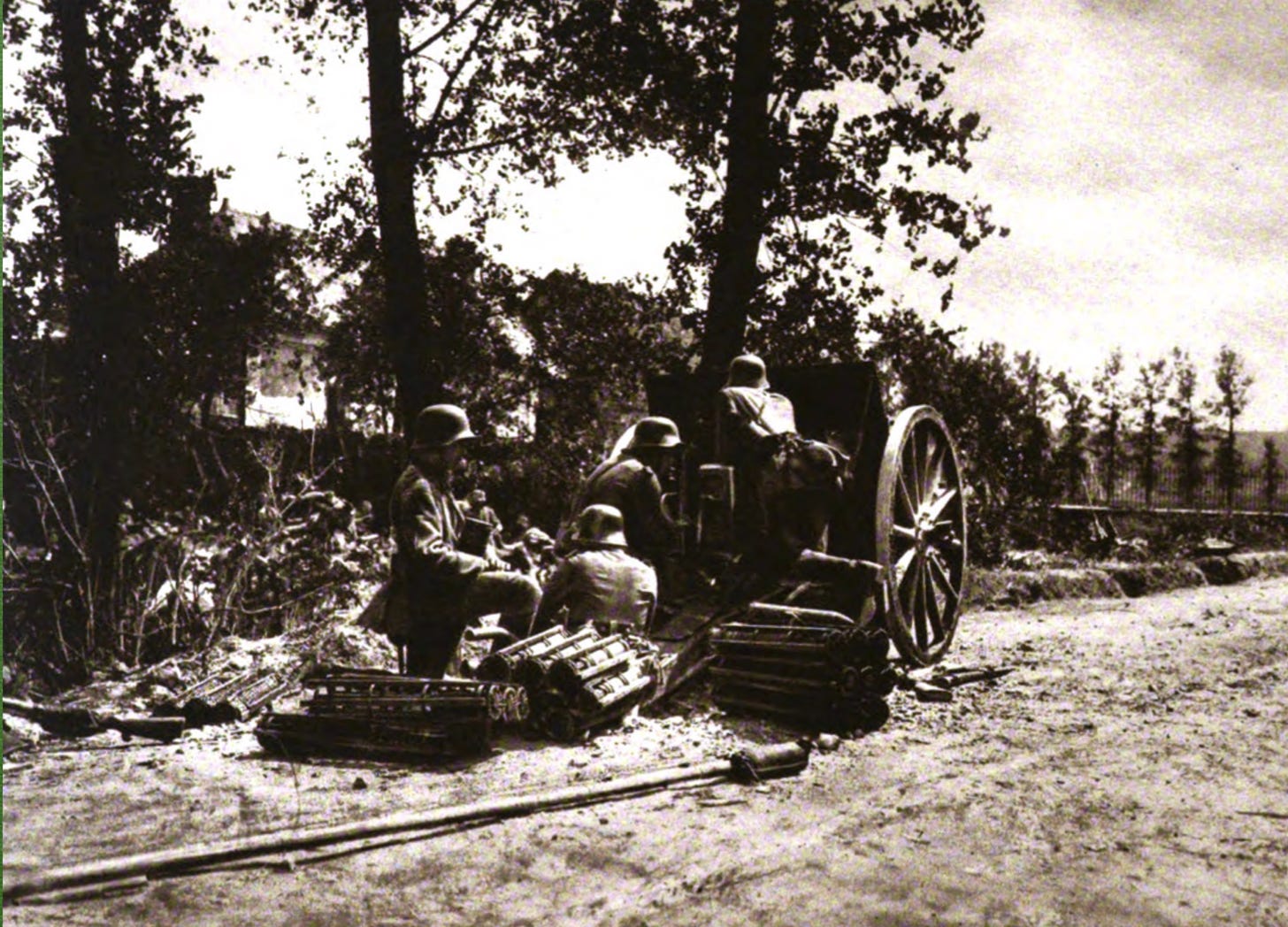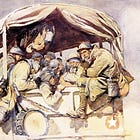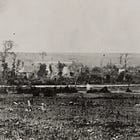Over Open Sights
An engagement from the spring of 1918
On 10 July 1918, the General Headquarters of the American Expeditionary Forces in France published a pamphlet that contained descriptions, told from the point of view of British participants, of three recent engagements. The following is a verbatim copy of the third of these three reports.
The third incident was given to me by a Lieutenant and it occurred in the fighting near _____.
The preliminary details of this fight - which occurred early in the morning and with good light and plain view - differ but little from the others. In this case, the [German] infantry relied more on the fire action of the advanced light machine gunners though suffering slight casualties. The heavy machine guns soon joined, both with enfilade and direct fire, and covered with a very intense fire the advance of the light machine gunners.
The minnenwerfers [sic] also came promptly into action with accurate and rapid fire but were never observed. The fire of the latter was not very effective in casualties, but did have considerable moral effect and, unquestionably, decreased the accuracy of his rifle and Lewis gun fire.
With the light machine guns and heavy machine guns and minnenwerfers in full action, one field gun - 77[mm], at about 800 yards range - came into action in plain view on the crest of a hill.
The fire of this gun was very rapid and accurate, and he thought that the moral effect of a field gun, firing cooly in plain view of their line without punishment from their own artillery, was very depressing for the men.
Their losses were severe and it was clear that the position could not be held. They withdrew as rapidly as possible subjected to a heavy fire and pressed very closely by the enemy before they - the enemy - suffered further losses by the action of a nest of machine (British) guns which they passed.
These machine guns opened fire on the advancing Germans and completely stopped them as far as he could see. This machine gun nest was without infantry support, but, apparently, willing and eager to take on the whole German advance with no thought of withdrawing.
Source: General Headquarters, American Expeditionary Forces ‘Extract: Report of American Officer on Recent Fighting’ (10 July 1918), US National Archives (Archives II), Record Group 127 (Records of the US Marine Corps), Records Relating to US Participation in the World Wars (1916-1945), Box 6 (27 May - 9 July 1918)
Acknowledgement: I would like to thank Michael Miller, late of the archives of the Marine Corps University, for giving me a copy of this document.
Source for Photo: Weltkrieg im Bild (Berlin: Verlag Weltkrieg im Bild, 1926) page 172
For Further Reading:
To Subscribe, Support, or Share:








This feels just like the incident with the machine gun platoon, but with more fire support, indirect and direct, on the German side. Same old result however. I wonder if it occurred to the platoon leader here to reinforce the machine gun platoon instead of just falling back?